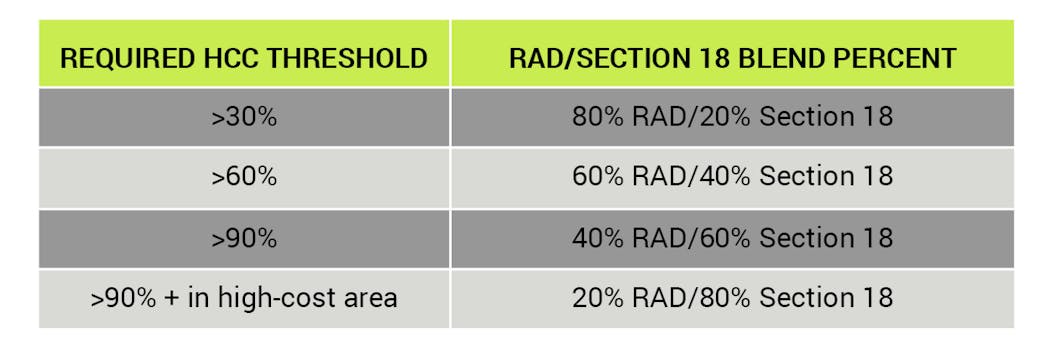

Unprecedented recapitalization and redevelopment opportunities for public housing agencies
Public housing agencies (PHAs) just got an extraordinary boost from the Department of Housing and Urban Development (HUD). A recently issued notice expands the blend between Rental Assistance Demonstration (RAD) and Section 18, giving PHAs more options than the previous “75/25 blend” allowed under PIH 2018-04, where 75% of their units in a covered transaction converted under RAD and the remaining 25% converted under Section 18.
The notice comes on the heels of a significant change to the Low-Income Housing Tax Credit (LIHTC) program when the fourth COVID-19 relief act was enacted in late December. The legislation made the credit rate fixed for tax-exempt bond transactions at 4% from the previously floating rate, giving PHAs access to almost 30% more equity in their housing units.
The confluence of the notice and the LIHTC increase is further bolstered by historically low interest rates, in addition to the 2020 RAD rents released by HUD in December which came out with higher-than-expected rents in many cases.
RAD background and breakdown
HUD’s notice expands the popular RAD program, which launched in 2012 “to preserve and improve public housing properties” and tackle billions of dollars of deferred maintenance backlog by leveraging public and private financial sources. As of November 2020, the RAD program had created more than $10 billion in construction investment for the “improvement and replacement” of 140,000 public housing units, according to HUD.
Notice 2021-07 expands the RAD/Section 18 Construction Blend and the RAD/Section 18 Small PHA Blend.
With the construction blend, HUD approves the percentage of units eligible for Section 18 disposition based on its hard construction costs proposed for the construction or rehabilitation of the covered project compared to HUD’s published Housing Construction Costs (HCC) for the market.

Example: For a project completing a $60,000 per unit rehabilitation, equating to 66% of the HUD-published HCC for the market, HUD will approve 40% of the units for Section 18 disposition.
Note:
- Units must be either newly constructed or rehabilitated without the use of 9% LIHTC
- Hard construction costs in the approved financing plan includes general requirements, overhead and profit, and payment and performance bonds
- High-cost areas defined as those where the HUD-published HCC exceeds 120% of the national average — nationally, only 43 areas out of 416 are considered high-cost areas
Notice 2021-07 also added a section for “small” PHAs, or those with 250 or fewer units, to convert up to 80% of their units under the Section 18 structure. Previously, small PHAs were only defined as those with 50 units or fewer. The expanded definition of “small” PHAs should get the attention of many housing authorities that may not have qualified for RAD last year, but could now.
To be eligible:
- The blend is applied at the project level
- The PHA must submit a repositioning plan to HUD showing how it will remove all of its public housing units
- Any project-based voucher contract must be administered by a PHA operating at least 250 Section 8 Housing Choice Voucher units
PHAs with 50 or fewer units still have the option to convert 100% of their public housing units under the Section 18 structure.
Regardless of which blend applies to a PHA’s situation, converting under Section 18 allows the PHA to charge its rents at Fair Market Rents (FMRs), which in many cases are above RAD rents. Using higher FMRs make deals more feasible for PHAs and gives them the ability to take on more debt, resulting in higher levels of renovation on their units.
Next steps for PHAs
Larger PHAs will first need to do an upfront capital needs assessment, taking into account things like the amount of maintenance or the type of renovations that should be done. They can then consider what it will mean for them to have the ability to enter into a transaction that could generate major proceeds to renovate their housing assets.
For the PHAs that fall in the “small” category, they don’t even require an upfront capital needs assessment since a conversion is not based on the HUD-published HCC chart.
Large or small, the majority of PHAs with rehab needs should qualify for one of the blend options, but the process for applying for RAD and working through the closing process is not simple and may be best executed with the help of a professional experienced in such matters.
That said, PHAs have never had this many tools and options available for revitalizing or repositioning their public housing assets, and the potential benefits are worth the effort.

